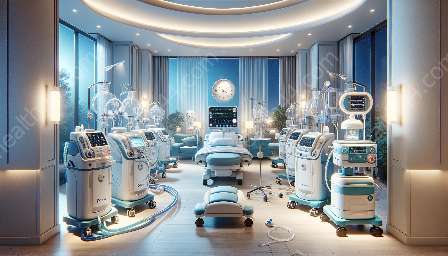Resuscitation equipment plays a vital role in modern healthcare, particularly in the field of respiratory care devices and medical devices & equipment. This comprehensive guide aims to provide an in-depth exploration of resuscitation equipment, its significance, and its integration with respiratory care devices and medical equipment. From advanced airway management tools to emergency ventilators and defibrillators, these innovations are designed to save lives and improve patient outcomes.
The Role of Resuscitation Equipment in Medical Settings
Resuscitation equipment encompasses a wide range of devices and tools that are critical in providing emergency medical care. These tools are essential in the initial stages of resuscitation, where prompt and effective intervention can make the difference between life and death. Medical professionals rely on resuscitation equipment to restore breathing, circulation, and other vital functions in patients experiencing cardiac arrest, respiratory distress, or other medical emergencies.
Key Components of Resuscitation Equipment
Resuscitation equipment includes but is not limited to the following:
- Defibrillators: These devices are used to deliver an electric shock to the heart during cardiac arrest, restoring normal rhythm.
- Bag-Valve-Mask (BVM) Devices: These manual resuscitators are used to provide positive pressure ventilation to patients who are not breathing or are breathing inadequately.
- Advanced Airway Management Tools: These include endotracheal tubes, laryngeal mask airways, and other devices used to secure and maintain an open airway during resuscitation.
- Emergency Ventilators: These devices deliver breaths to patients who are unable to breathe adequately on their own, providing life-sustaining respiratory support.
- Suctioning Devices: These tools are used to clear the airway of secretions, blood, or other obstructions during emergency situations.
Integration with Respiratory Care Devices
Resuscitation equipment is closely integrated with respiratory care devices, as both are focused on supporting and maintaining respiratory function in patients. Respiratory care devices, such as oxygen concentrators, nebulizers, and continuous positive airway pressure (CPAP) machines, work in tandem with resuscitation equipment to address a wide range of respiratory conditions and emergencies.
For example, in the case of a patient experiencing respiratory failure, resuscitation equipment may be used to provide immediate life-saving interventions, while respiratory care devices can be employed in the ongoing management and support of the patient's respiratory needs.
The Significance of Seamless Integration
Seamless integration between resuscitation equipment and respiratory care devices is crucial in ensuring a continuum of care for patients. This integration allows medical professionals to transition smoothly from emergency resuscitation to long-term respiratory support, maximizing patient outcomes and minimizing disruptions in care.
Impact on Medical Devices & Equipment
The development and continuous enhancement of resuscitation equipment have had a significant impact on the broader landscape of medical devices and equipment. These innovations have driven improvements in patient care, clinical outcomes, and overall healthcare delivery.
Advancements in Technology
Technological advancements in resuscitation equipment, such as the integration of smart monitoring systems, wireless connectivity, and remote telemetry, have transformed the way medical professionals respond to emergencies. These innovations enable real-time data monitoring, immediate notification of critical events, and more precise delivery of life-saving interventions.
Enhanced Patient Safety
The advancements in resuscitation equipment have also contributed to enhanced patient safety by reducing the time to intervention, improving the accuracy of resuscitation efforts, and minimizing the risk of complications during emergency care.
Collaborative Evolution
The collaborative evolution of resuscitation equipment with other medical devices and equipment has fostered a more streamlined approach to patient care. By integrating these innovations, healthcare providers can optimize the delivery of comprehensive medical interventions, leading to better outcomes for patients across diverse clinical scenarios.
Conclusion
Resuscitation equipment is an essential component of modern healthcare, with far-reaching implications for respiratory care devices and the broader landscape of medical devices and equipment. These innovations are instrumental in saving lives, supporting patients in critical conditions, and driving continuous advancements in emergency medical care.
As technology continues to evolve and healthcare practices adapt to meet the evolving needs of patients, resuscitation equipment will remain a cornerstone of emergency and critical care, fostering better outcomes and ultimately, saving countless lives.


